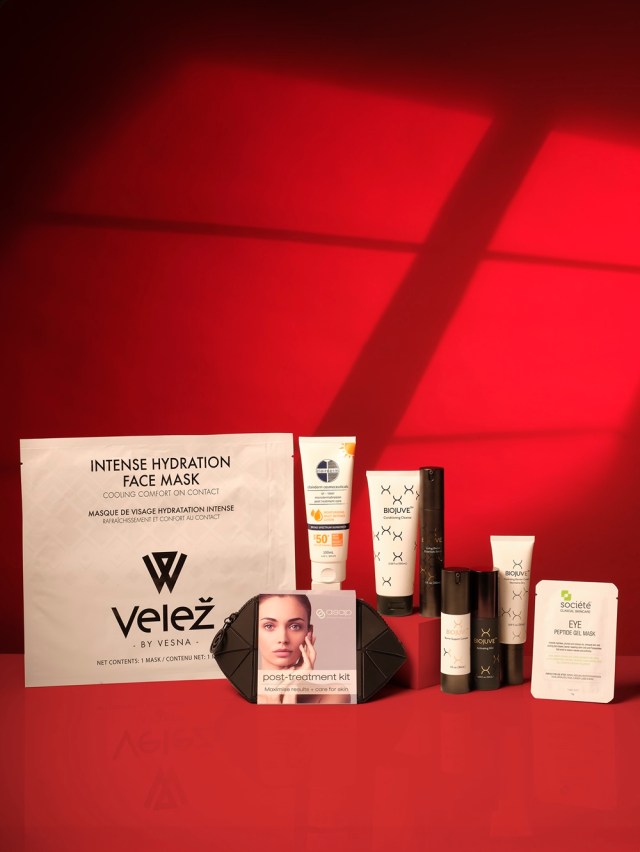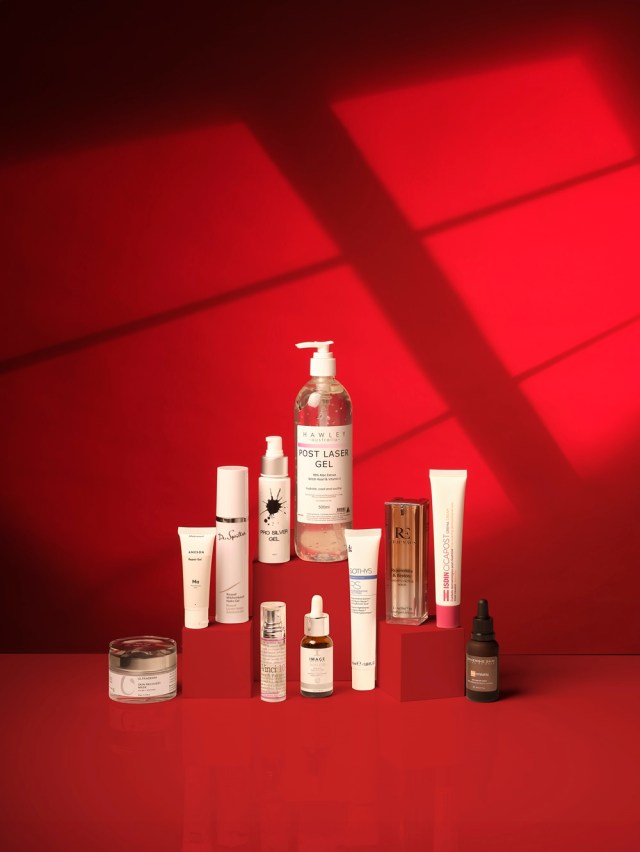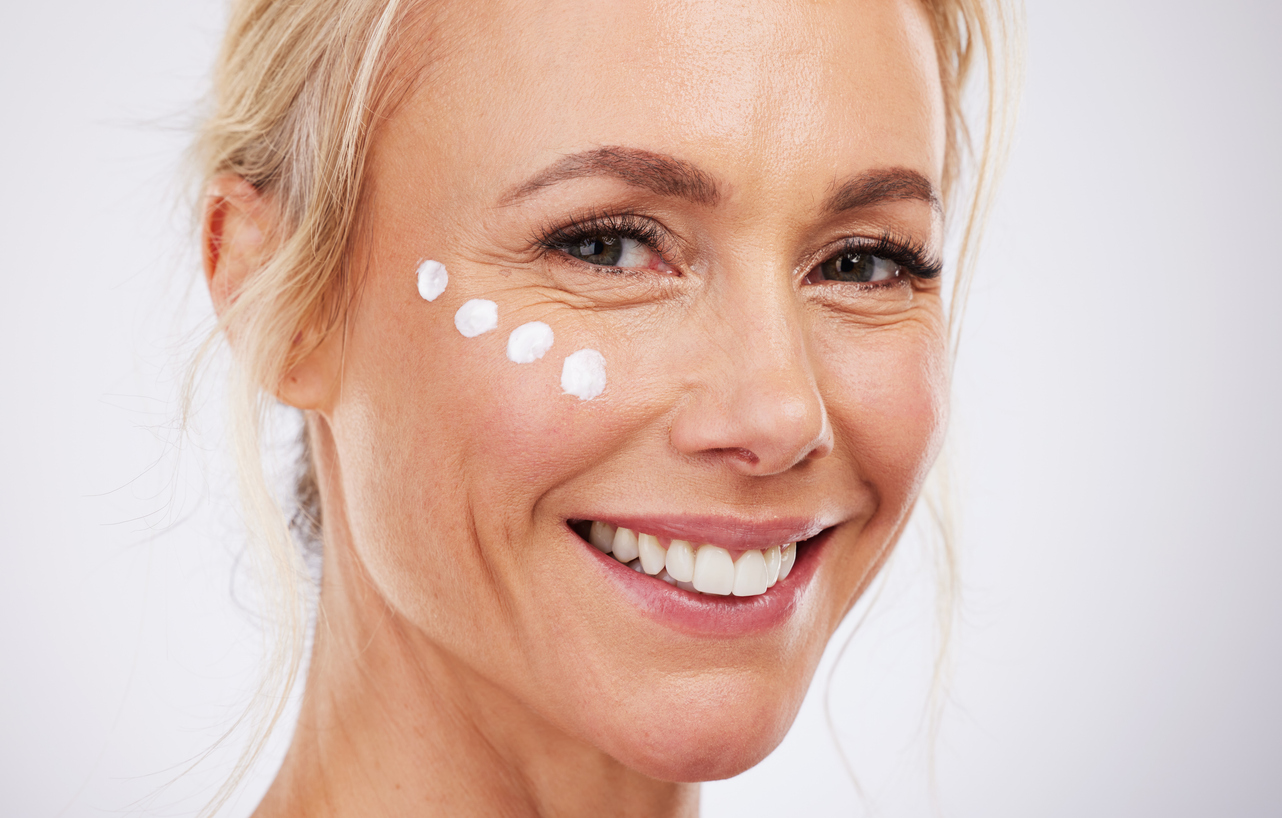Hannah Gay spoke to Dr Garry Cussell, CEO at Rejuvenation Clinics of Australia and Rejuvaus, to learn how best to treat skin after an intensive procedure.
Hannah Gay: Is the average skin just as sensitised by non-ablative procedures, such as peels, as by ablative procedures, such as needling? Explain.
Dr Gary Cussell: “There are a few factors that differentiate a light procedure from a strong one. [The former] will leave a small amount of redness, or inflammation. [The latter] can cause more inflammation and skin peeling. This breaks the skin surface, thus creating a lot of skin flaking and often blockages, oil entrapment and pimples. Therefore it is important to use a cleanser to wash away the dead cell debris that builds up. The more invasive a skin treatment, the more inflamed, the skin usually becomes, and the more sensitive it can be over a period of time until complete healing occurs.
So, the best way to talk about this is to talk about these two main groups of procedures and outcome results. The more gentle procedures done by beauty salons are more likely facial peels, using gentle acids that can leave the skin inflamed or slightly red but do not break the surface of the skin.
It is really a function of how much the surface barrier is broken and how long it takes for it to repair following the deeper and more invasive treatments. On the other hand, the deeper and more invasive treatments produce better repair of damage tissue and are more likely to produce a better result, such as where skin texture or scarring problems are present.
Our skin becomes more sensitive when it is inflamed or reddened by treatments that are more invasive or irritating. Treatments that penetrate and break the skin surface, such as skin needling, or the much deeper radio frequency (RF) needing, and more ablative lasers, break the skin and are also the most inflammatory and cause more reactivity and more healing time.
Treatments that do not break the skin, but can also inflame the skin and cause redness and sensitivity, such as stronger acid peels, can also require more healing to get over the sensitivity and redness and healthy restoration. Generally it is better not to need and thus avoid the the stronger, more inflammatory and invasive treatments that break the skin surface, unless the skin is significantly damaged and requires increased repair treatment done.
The best way of preventing skin damage in the first place and the need for invasive repair treatments, is to regularly use effective skin repair and rejuvenating active serums on the skin, twice daily to maintain a healthier complexion.”
You mentioned that the more ablative the treatment and the more likely skin is to peel, the more likely an individual will experience blockages and oil entrapment in the skin. Does this go for all ablative treatments, and if not, which treatments are more likely to cause these side effects?
“Treatments that cause more skin peeling and therefore more potential blockage and entrapment of oil are more likely to occur with ablative than non-ablative treatments. Non ablative treatments, with the skin not necessarily broken, repair more quickly and are less inflammatory. Naturally any blockage or occlusion of the skin surface producing more entrapment of oil, dead cell debris, microorganisms and pigmentation can lead to more side-effects.
Therefore pre-treatment, to prepare the skin and ensure a healthy intact skin barrier without a thick occlusive entrapment layer, is extremely important, especially for more ablative treatments. Secondly, using the same serums to ensure adequate but gentle exfoliation and thinning of the occlusive or entrapment layer, after treatment is important. These can and should be used immediately after and as an ongoing maintenance to ensure the best healing and results.”

Do you believe beauty therapists should always recommend a niacinamide for at-home use after all treatments?
“Yes we do, as vitamin B3 has many healing properties. It is calming, soothing anti-inflammatory, promotes better tissue healing, and most importantly, helps to reduce the risk of post treatment Hyper (increased) Pigmentation. It is usually extremely well tolerated providing it is in a slow release, encapsulated form. Non-encapsulate forms of vitamin B3 can cause a redness and an inflammatory response and should be avoided after both ablative and non-ablative treatments.”
What is the best ingredient and/or technology available to help speed up post-procedure treatment time?
“Where procedures are semi ablative or fully ablative and break the skin surface, many things can go wrong, causing the skin to heal less optimally. The best way to ensure good healing and trouble free healing is to use topical serums that are capable of reducing inflammation and redness and preventing entrapment of dead cell debris, oil, and pigment that can cause complications on healing skin.
By continuing to keep the skin free of occlusive dead cell debris and possible infection, the use of a gentle fruit acid exfoliating cleanser 2 or 3 times a day, is very important. Using anti-inflammatory agents in a form that do not irritate the skin, such as encapsulated niacinamide and non-acidic vitamin C (such as in Kakadu Plum) and also other anti-inflammatory and anti-infective agents found in natural plant and vegetable oils, will also help prevent occlusion and the side-effects of inflammation and infection.
Other ingredients that are important are the pre- and probiotics and the pigment inhibitors that help to regulate normal pigment production, without having hyper pigmentation side-effects, commonly found in the stronger, more ablative skin treatments.
It is also advisable to start using a slow release, encapsulated BHA (such as in Clarify & Renew serum) by the second or third day after treatments, as a leave-on exfoliant to maintain a thin and non-occlusive entrapment healing layer on the surface of the complexion. Also vitally important is the use of a non-nano zinc sunscreen protection, that is non-occlusive. Try to avoid any of the harsh chemicals found in most sunscreen products.
DNA and RNA stimulating ingredients, such as found in collagen peptides and growth factors help to improve the skin cell turnover, and increase the rate and quality of skin repair. All of these active ingredients are found in the range of Rejuvaus serums that can be applied immediately, or soon after even the most ablative skin repair lasers, or needling procedures.
Treatments that can help speed up the healing process of reducing inflammation and promoting healing such as phototherapy lights, using the blue-light wavelength (410 NM) and the red-light (640 NM), provide excellent in-clinic treatments to promote quicker and better healing time.”

[left to right]
Velez by Vesna Intense Hydration Face Mask
Contact High Tech Medical
asap Post-Treatment Kit
Contact asap
Clairderm Moisturising Daily Defence Lotion SPF 50+
Contact Clairderm Medical Aesthetics
Biojuve The Complete Regime
Contact Advanced Skin Technology
Societe Eye Peptide Gel Mask
Contact Advanced Skin Technology

[left to right]
ultraderm Skin Recovery Mask
Contact Ultraderm
Juliette Armand AMESON Repair Gel
Contact Juliette Armand
Dr. Spiller Rinazell Lacteal Active Substance Gel
Contact OmniDerm
Cosmetic Tattoo Supplies Pro Silver Gel
Contact Cosmetic Tattoo Supplies
CosmedIQ da Vinci 10 Growth Factors
Contact CosmedIQ at learne@cosmediq.com.au
Hawley Australia Post Laser Gel
Contact Hawley International on 02 8667 1700
Image Skincare Ageless Total Pure Hyaluronic Filler
Contact Professional Beauty Solutions
Sothys Regenerative Serum
Contact Sothys
Rejuvaus Rejuvenate & Restore Growth Factor Serum
Contact Rejuvaus at hello@rejuvaus.com.au
ISDIN Cicapost Cream
Contact DermoCosmetica
Synergie Skin Dermiotic Pre-Serum Elixir
Contact Synergie Skin
This photoshoot originally appears in the Autumn 2024 print issue of Professional Beauty. Photography by Brandee Meier. Words & styling by Hannah Gay.
Read the current issue of our digital magazine here:
- For more news and updates, subscribe to our weekly newsletter
- Follow us on Instagram
- Like us on Facebook
- Join Australia’s largest network of beauty industry professionals on LinkedIn
- Subscribe to our print magazine
Have an idea for a story or want to see a topic covered on our site and in our pages? Get in touch at info@professionalbeauty.com.au.

